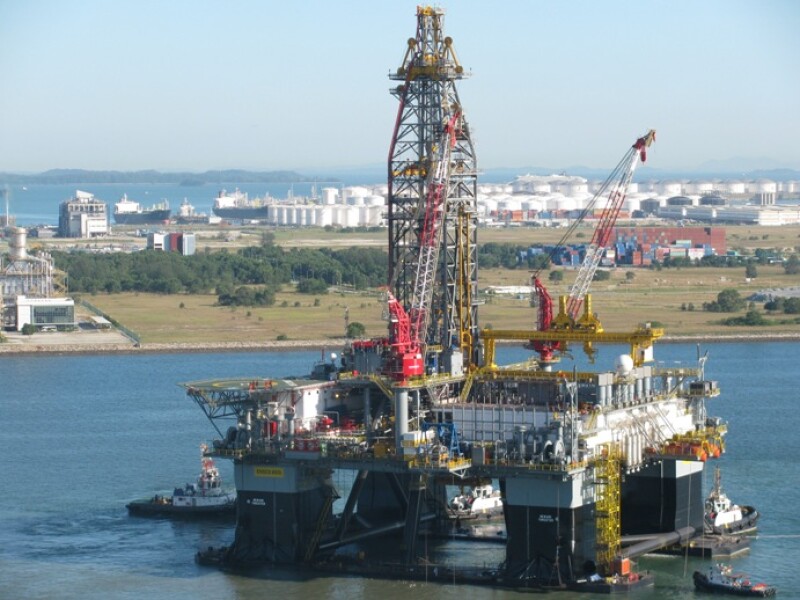Two deepwater rigs that were likely destined for the scrap yard appear to have found a second lease on life as offshore launchpads.
This is according to various reports that claim SpaceX is linked to the purchase of a pair of semisubmersibles from London-based offshore drilling contractor Valaris before it filed for bankruptcy protection last year.
The development was first reported on Twitter by reporters with NASASpaceFlight, an independent website covering the space industry, who shared photos of a drilling rig in Brownsville, Texas, which sits along the Gulf of Mexico. The images showed a rig named Deimos and the website reported that a second rig named Phobos is also sitting quayside in Brownsville.
The semisubmersibles both measure 240 × 255 ft and were formerly known as ENSCO 8500 and ENSCO 8501, respectively. According to public reports they were sold for $3.5 million apiece by Valaris in August. Later that month the drilling contractor, which was formed in 2019 when Ensco acquired Rowan, was forced into bankruptcy protection as the pandemic-driven downturn removed hopes of an offshore revival.
The owner of the newly renamed rigs is a company called Lone Star Minerals which public records show was incorporated in Texas in June. Twitter users revealed that the limited liability company has a single principal listed: Bret Johnsen, the CFO and president of strategic acquisitions at SpaceX.
The company is known to have used a similar arrangement for its rocket landing barges that it leases from a wholly owned subsidiary. SpaceX also operates a test launch site in Boca Chica, Texas, located about 20 miles from Brownsville.
SpaceX has not commented on or confirmed the details surrounding the two rigs.
In June, SpaceX began recruiting offshore operations engineers “to design and build an operational offshore rocket launch facility.”
As news of the job postings spread, SpaceX CEO Elon Musk confirmed on Twitter that the company’s goal was to build “floating, superheavy-class spaceports” that could be used to send rockets into Earth orbit, to the Moon, or to Mars.
Deimos and Phobos are the names of the two moons of Mars.
The ENSCO 8500 was constructed in Singapore in 2008 as the first of seven identical rigs designed to drill in up to 8,500 ft of water and maintain station using dynamic positioning. Rig builder Keppel FELS delivered the ENSCO 8501, the second in the series, to the Gulf of Mexico in 2009.
The semisubmersible is the offshore oil and gas industry’s most-common type of mobile drilling rig. As the industry moved into deeper waters, the semisubmersible design became increasingly popular because it affords a large and stable deck space.
If SpaceX manages to convert the deepwater drilling units into launchpads, it will not be the first to do so. In 1997, a semisubmersible previously used to drill subsea wells was converted into a commercial spaceport.
Called the Odyssey, the 456-ft long vessel was stationed on the equator where the surface of the earth moves faster than it does closer to the poles, thus lowering the cost of launches. The floating facility was used to successfully launch more than 30 rockets with satellite payloads from 1999 to 2014.


